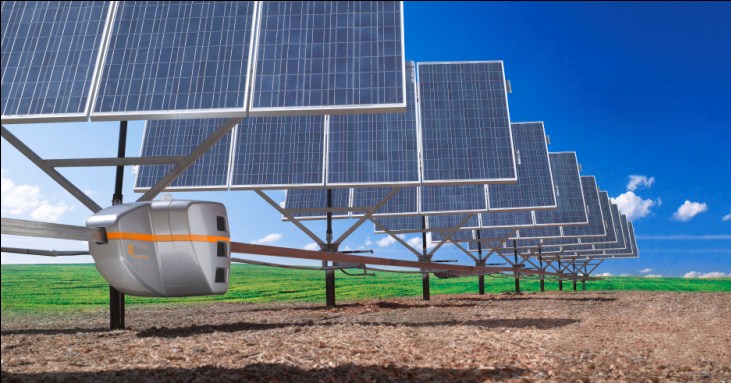One of the major problems with solar farms is that the static nature of panels cause a portion of the sunlight to be captured at less than optimum angles thereby reducing the output of the Solar Plant. Robotic Solar Panel tracking system manufactured by Qbotix is an autonomous and dynamic system designed to maximize Solar Panel efficiency by adjusting the angle of the panels to face sunlight at the best angle possible. The company claims that the robots are able to provide dual axis tracking at single axis tracking costs (dual axis tracking is the adjustment of the panels on both horizontal and vertical axes, in comparison to just vertical or horizontal).

The system, according to the company press release, is able to increase the output of solar plants containing only static ground mounted panels by up to 40%, which in turn lowers the overall cost of electrical production, in technical terms, Levelized Cost of Electricity (LCOE) by 20% (of course the increase of output is a little offset by the additional price of using the robots but these numbers are showing that the benefits outweigh costs). The robots are also quick to install, easy to maintain and compatible with various types of solar panels.
Qbotix also raised a total funding of $7.5 million to date, which underlines the importance of robotic operation of panels in solar plants.
https://www.youtube.com/watch?v=Iq-3n4uHEvc
There are big advantages of using robots to adjust solar panels versus the conventional tracking systems. Qbotix tracking system, QTS, is a lightweight tracking system, versus the big steel structures and motors required to operate conventional tracking systems. QTS utilizes a pair of autonomous robots, one primary and one back-up, to control 300 kW of solar panels with high accuracy and reliability. The solar panels are installed on mounting systems that don’t have any individual motors and are optimized for cost, strength, durability and installation simplicity. The robots travel on a track and adjust each mounting system to optimally face the sun in succession. Each robot replaces hundreds of individual motors and controllers found on conventional tracking systems. The embedded intelligence and data communication capabilities of each autonomous robot optimize power plant performance and enables detailed operational knowledge. Another advantage of the system is that it ships pre-assembled and can be installed in minutes without using heavy equipment. It can be installed without extensive land grading required by other tracking systems, thereby reducing the construction costs further. Modular architecture allows fast deployments for all size of power plants. These little robots are also tough: they are dust and water resistant and can operate between -30 C and + 60C. As seen here, the whole concept seems to be successfully automated by utilizing robots.
For more information about the system, please see the company’s official website at www.qbotix.com

You must be logged in to post a comment Login